Matsui Fuyuko’s work is highly sensitive, violent and self-contradictory. However, when conveyed through a clear-cut classical format, her personal trauma is sublimated into something universal. Her paintings can certainly be described as feminist, but – like Goya and the Chapman brothers – they also deal with death. If her works were to be compared with those of female artists such as Kiki Smith and Eva Hesse, who have both portrayed disease in their art, and Shirin Neshat, who has depicted madness, the distinctive feature of Matsui’s practice is that she uses line to convey the gaze, and shading to convey the body.
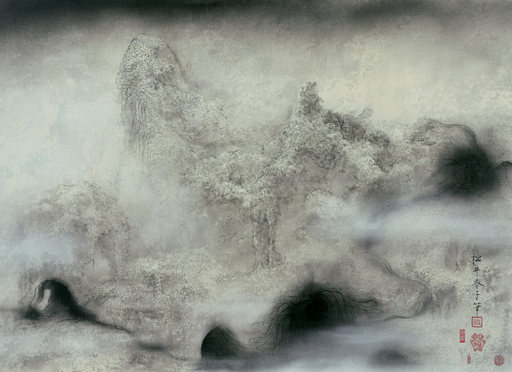
Continuous Failures in the Collision of Fragments by Matsui Fuyuko 2007
Matsui’s pictures incorporate people, flowers, animals and landscapes, but these are combined into fantastical depictions of death and violence and rape inspired by ghost paintings and rokudou-e. Ghost paintings are just that – pictures portraying ghosts that began to be produced after the fifteenth century. Many feature women unable to attain Buddhahood because they bear a grudge of some kind. Instead, they float in this world, and are typically shown with long hair, dressed in a white kimono and without feet. Rokudou-e, a name deriving from the Japanese Buddhist term rikudou/rokudo, show the six paths or
realms of existence during the process of reincarnation – the Deva Realm, Human Realm, Asura Realm, Animal Realm, Hungry Ghost Realm and Hell Realm. In Buddhism, reincarnation is viewed not as a spatial phenomenon, nor as a world that one passes into after death, but as a spiritual state. Partly with the aim of proselytising the masses, large numbers of rokudou-e were produced from around the twelfth century. Matsui has been particularly influenced by those depicting the Hell Realm. Her highly narrative works are underpinned by themes such as narcissism, insanity and miscommunication.
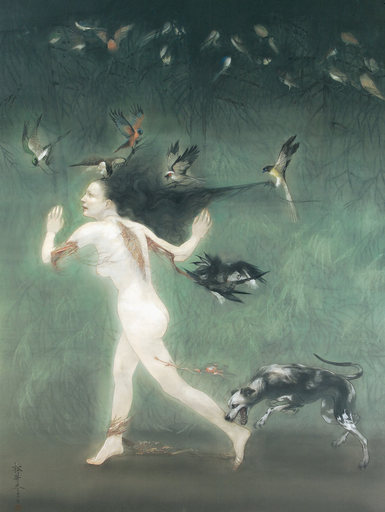
Scattered Deformities in the End by Fuyuko Matsui 2007
Fuyuko Matsui (松井冬子, Matsui Fuyoko, born January 20, 1974) is a female Japanese artist, specializing in Nihonga paintings with a ‘grotesque’ or supernatural element. Her art has been widely exhibited in Japan and she has been featured on TV and magazines. She was one of the featured artists at the Museum of Contemporary Art, Tokyo’s “Annual 2006” exhibition and at the Yokohama Museum of Art’s “Nihonga Painting: Six Provocative Artists” in August 2006.
The excerpts are from Yuko Hasegawa’s visit to Fuyuko Matsui’s Tokyo studio. Yuko Hasegawa is an art critic and chief curator at the Museum of Contemporary Art, Tokyo, and a founding artistic director of the 21st Century Museum of Contemporary Art, Kanazawa. Fuyuko Matsui’s work is included in ‘Medicine and Art: Imagining a Future for Life and Love – Da Vinci, Okyo, Damien Hirst’, Mori Art Museum,Tokyo, 28 November – 28 February. You can read the whole article here.
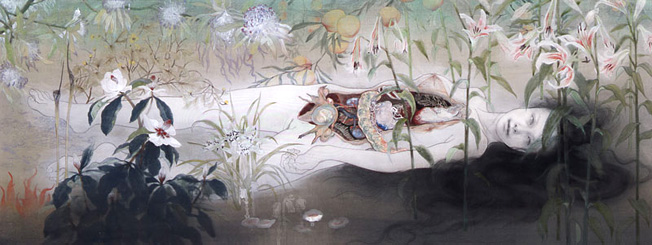
Official site of Fuyuko Matsui.
Book publication by treville editions.
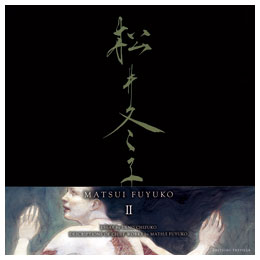
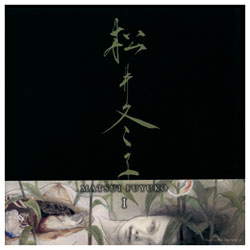

Recent Comments
pete says,
thank you very much this was very helpfulH M Yamada says,
There is something dire, dangerous and mysteriously compelling about these ...
Robert Horvitz says,
Belated thanks for citing my work! I have a newer ...
article/about says,
Berber as well as Arab nomads took their caravans of ...
Betty Wood says,
Sometimes when I create something beautiful I feel like someone ...